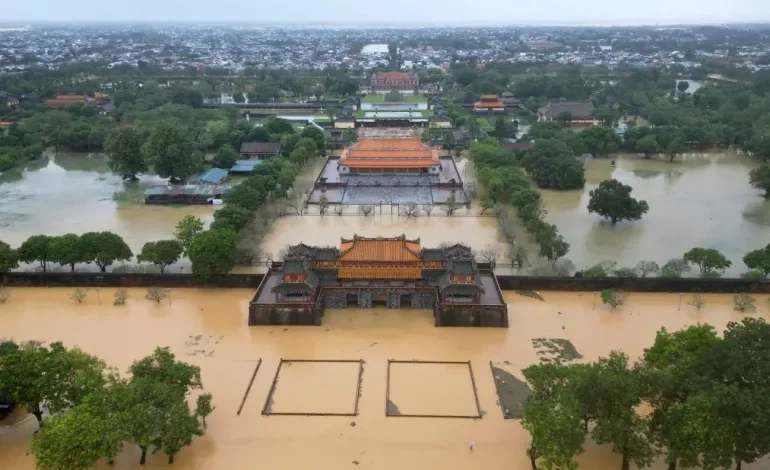Central Vietnam is reeling from record-breaking floods after torrential rains drenched the region’s historic cities of Hue and Hoi An, turning UNESCO heritage sites into temporary lakes and displacing thousands.
Vietnam’s disaster management agency recorded more than 1,000 millimetres (39.4 inches) of rainfall within 24 hours, the highest daily total ever measured in the country’s history. The deluge left much of Hue, the former imperial capital, under more than a metre of water, while rivers swelled beyond record levels.
Water levels on the Huong and Bo rivers hit 5.25 metres (17.2 feet) on Monday afternoon, smashing the previous peak set in 2020, before beginning to recede slightly by Tuesday. Still, entire neighbourhoods remained submerged, and images showed Hue’s palace grounds and ancient streets under brown, debris-filled water.
Authorities warned the flooding could persist through Friday.
“We are monitoring the situation closely and preparing for more rain,” local officials told state media.
In nearby Quang Ngai province, a 3km-long landslide of red mud cut off 1,700 residents, while more than 8,600 people have been evacuated from four central provinces due to flooding and landslide risks.
The heavy rains also crippled infrastructure. Vietnam Railways suspended train services between Hanoi and Ho Chi Minh City, while over 300,000 homes and businesses across Hue, Danang, and Quang Tri lost power.
This crisis follows Typhoon Bualoi in September, which left at least 13 people dead and 20 missing. Together, they mark one of the most destructive rainy seasons in recent memory, a pattern scientists say is tied to the escalating effects of climate change.
The General Statistics Office estimates natural disasters have already killed or left missing 187 people and caused more than $610 million in damage across Vietnam this year.










The latest news in your social feeds
Subscribe to our social media platforms to stay tuned